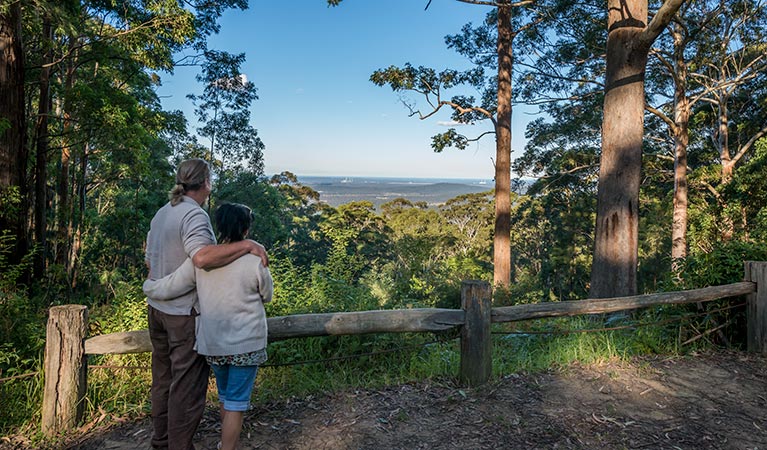Muirs lookout
Jilliby State Conservation Area
Overview
Muirs lookout at Jilliby State Conservation Area displays amazing scenic views from the Watagan Range overlooking neighbouring townships.
- Type
- Lookouts
- Accessibility
- Hard
- What to
bring - Hat, sunscreen, drinking water
- Please note
- The roads in this park are accessible by 4WD only
- Remember to take your binoculars if you want to go birdwatching
No trip to Jilliby State Conservation Area would be complete without taking the time to enjoy awe-inspiring scenic views from Muirs lookout.
Gaze miles out along the mountains and eucalypt forests of Watagan Range, with panoramic views to the east over semi-rural communities - Mandalong and Morisset, as well as Lake Macquarie, included.
If you enjoy birdwatching, be sure to bring your binoculars. There are many interesting bird species that call Jilliby State Conservation Area home. At night you might be lucky enough to see the threatened sooty, barking, masked or powerful owls.
Tall eucalypts framing the view across the coast make Muirs lookout an idyllic spot to spread out and enjoy a peaceful picnic or even just a cup of tea to take in the naturally beautiful surroundings.
Map
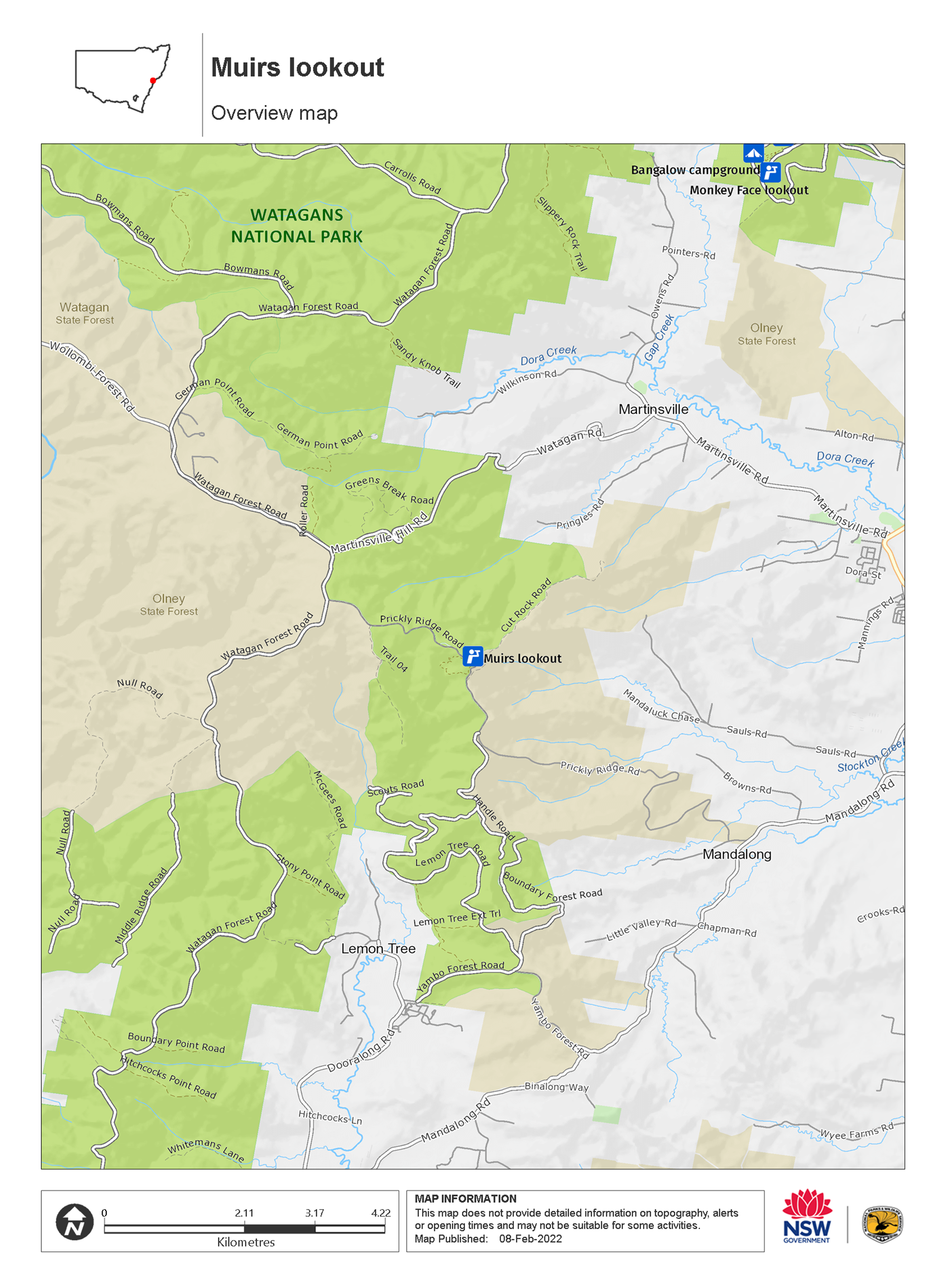
Map legend

Local alerts
For the latest updates on fires, closures and other alerts in this area, see https://uat.nswparks.cloud/things-to-do/lookouts/muirs-lookout/local-alerts
General enquiries
- National Parks Contact Centre
- 7am to 7pm daily
- 1300 072 757 (13000 PARKS) for the cost of a local call within Australia excluding mobiles
- parks.info@environment.nsw.gov.au
Park info
- in Jilliby State Conservation Area in the Sydney and surrounds and North Coast regions
Jilliby State Conservation Area is always open but some sections may have to close at times due to poor weather or fire danger.
Visitor info
All the practical information you need to know about Muirs lookout.
Maps and downloads
Learn more
Muirs lookout is in Jilliby State Conservation Area. Here are just some of the reasons why this park is special:
A history of booming trade
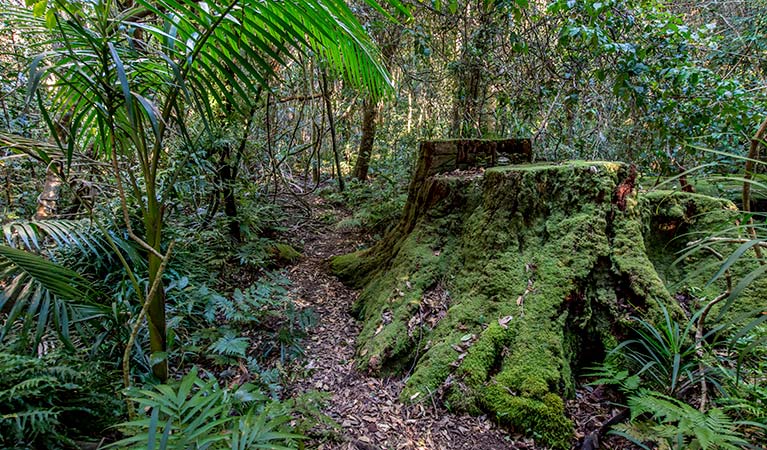
The mountainous ranges and heavily timbered gullies of Watagan Range were a physical barrier to exploration and development. Jilliby was on the western side of Tuggerah Lakes and Lake Munmorah as the colony of Sydney began to expand. These ranges soon were exploited to provide valuable, marketable timber using nearby waterways for transport. Government licences were issued to a small number of sawyers to cut red cedar in the ranges west of Tuggerah and Lake Macquarie. The early colonial cedar trade saw most of the cedar shipped off to England to supply an insatiable market for fine softwoods. Hardwood fed a building boom from the 1860s and provided sleepers for the northern railway line.
Aboriginal sites
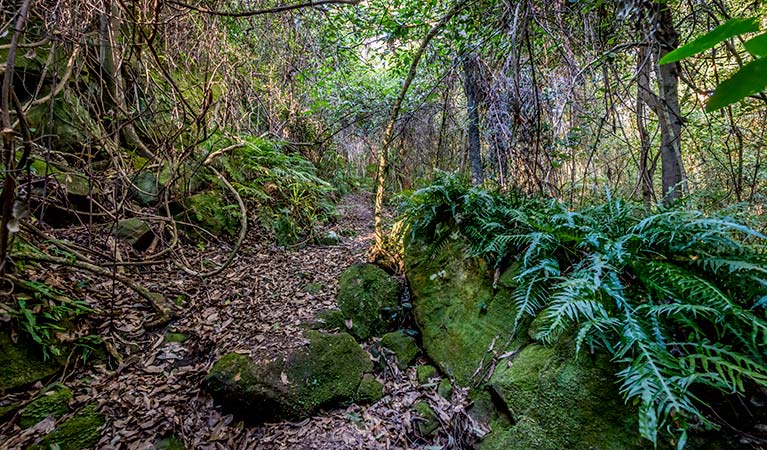
Jilliby is an important cultural and historical area for Aboriginal people. There are more than 40 recorded Aboriginal sites in Jilliby, and the adjacent Watagans National Park also includes art sites, axe-grinding grooves and open campsites. Awabakal and Darkinjung People were the original inhabitants of Watagan Range, which once provided a rich range of food sources, including plant foods such as fruit, acacia, grass seeds and nectar. Fish and freshwater shellfish were fished from the rivers, and local wallabies, kangaroos, possums, lizards and even insects were all part of the local diet.
Unique plants and animals
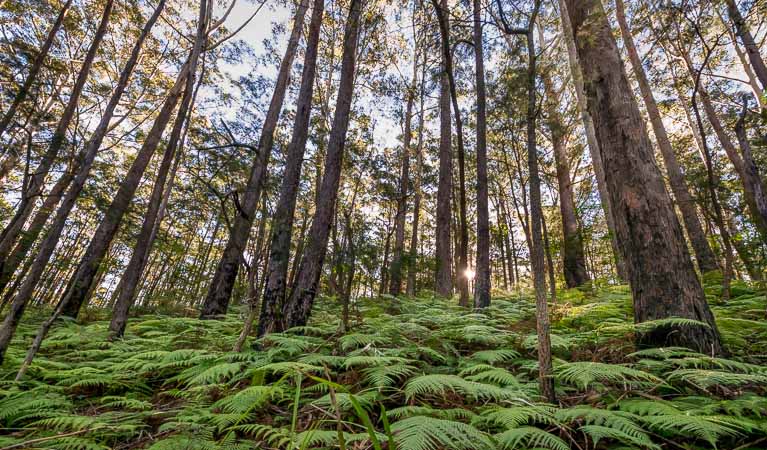
Jilliby is a natural wonderland filled with an enormous diversity of plant species and native vegetation. Wandering through, you'll discover tall moist eucalypt forests flourishing with mountain blue gum and blue-leaved stringybark. There are also drier forest areas that will enchant you with forest oak, Sydney peppermint, and broad-leaved white mahogany. Pockets of paperbark palm forests, and warm-temperate as well as subtropical rainforest occur in sheltered gullies and creeklines.
- Muirs lookout Muirs lookout at Jilliby State Conservation Area displays amazing scenic views from the Watagan Range overlooking neighbouring townships.

